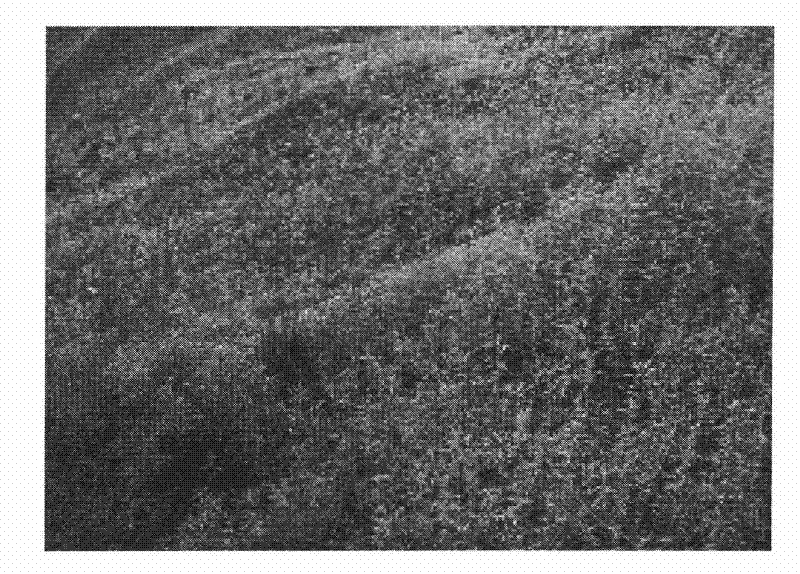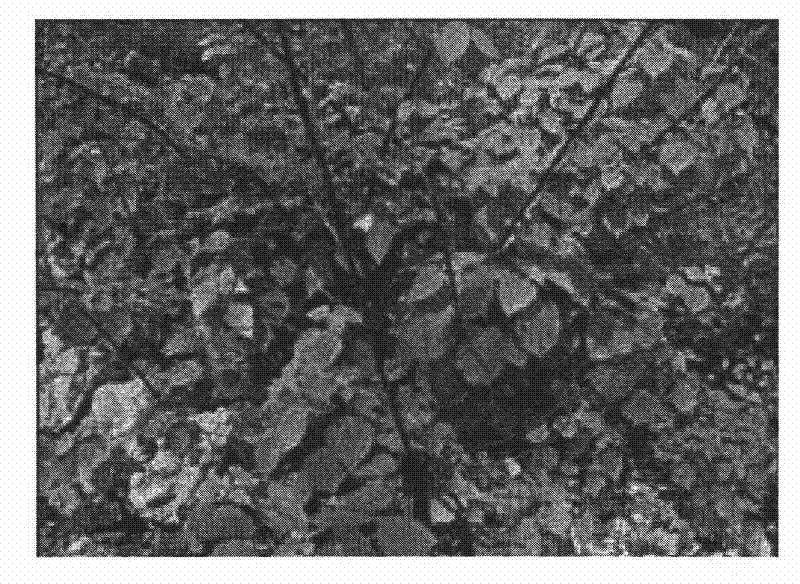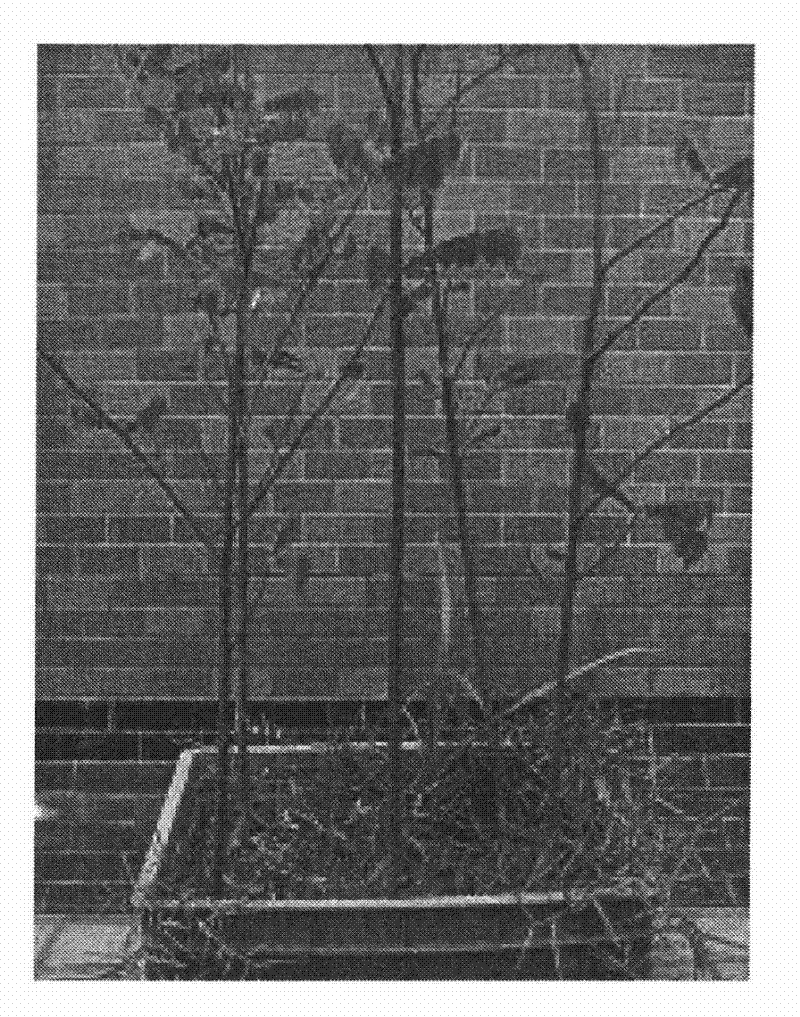Ecological rehabilitation method for removing heavy metals in soil
A technology for ecological restoration and dumping, which is applied in the restoration of polluted soil, etc., can solve the problems of plant configuration technology in heavy metal mining dumps, single species of reconstructed vegetation, unstable growth conditions, etc., so as to improve soil dumping. Field landscape, fast growth, and improving the ability to retain water and fertilizer
- Summary
- Abstract
- Description
- Claims
- Application Information
AI Technical Summary
Problems solved by technology
Method used
Image
Examples
Embodiment 1
[0033] Embodiment 1 vegetation investigation and Pb / Zn / Cu tolerance plant screening
[0034] The ecological survey of vegetation status was carried out in nine copper / lead-zinc mining areas in Guangdong, Anhui, Hubei, Jiangsu and Yunnan, and 217 species of 85 genera and species of higher plants were recorded and analyzed. Considering the biomass, dominance, heavy metal content of the plants in the settlement site and the heavy metal content of the corresponding soil, 35 species of copper-tolerant plants and 45 species of lead- and zinc-tolerant plants were preliminarily screened out. Through indoor hydroponic or soil culture experiments, 16 kinds of Cu-tolerant plants were verified, namely: Cynorrhizae haizhou, Commelina chinensis, Muscaria chinensis, Polygonum cephalum, Polygonum sorrel, Polygonum water, Artemisia chinensis, Flea, Qumai , Nvloucai, Kabangui, sorrel, pokeweed, ramie, Artemisia captiva and foxtail. 15 kinds of lead- and zinc-tolerant plants, namely: Dianbaiqia...
Embodiment 2
[0035] Embodiment 2 Indoor potted three-dimensional plant configuration mode
[0036] In September 2007, the heavy metal-contaminated soil was collected from the Dabaoshan wasteland and transported back to the laboratory, and a pot experiment was used to build a tree-shrub-grass three-dimensional configuration vegetation restoration model indoors. The upper layer of vegetation is planted with Cd-tolerant plant carambola, the middle layer with shrub peach blossom, ramie, etc., and the lower layer with herbaceous Zn-tolerant plant Sedum sedum, Cu-tolerant plant Dracula chinensis, polymetallic-tolerant grass species Bermudagrass, tall fescue, etc. A total of 16 combinations of different arbor-shrub-grass or arbor-grass configuration patterns were designed. The arbor carambola seedlings are seedlings cultivated in the field; The seeds of wild seedlings, tall fescue, and bermudagrass are collected directly for sowing. One year later, the trees grew well, the shrubs were poor, the ...
Embodiment 3
[0037] Embodiment 3 Dabaoshan dump site vegetation restoration configuration mode
[0038] Field seedlings include eucalyptus, paulownia, camphor, masson pine and other saplings; reed, ground millet, elephant grass, and five-jointed awns are raised in rhizomes directly in nutrition bags; seeds of bermudagrass and tall fescue are collected in autumn. The reared seedlings are planted in the dump site polluted by heavy metals according to the allocation area ratios of trees, shrubs and herbs of 10-20%, 20-30% and 50-70% respectively. The planting distance of trees is 5m, and the planting distance of shrubs is 1m. The density of bermudagrass and tall fescue grass seeds is 20kg of grass seeds per hectare of land area. straw. Depending on the survival and growth of the seedlings, replant certain seedlings. After one year, a stable vegetation community was basically established on the bare land of the dump, with a coverage of 70-80% ( Figure 4 ).
PUM
 Login to View More
Login to View More Abstract
Description
Claims
Application Information
 Login to View More
Login to View More - R&D
- Intellectual Property
- Life Sciences
- Materials
- Tech Scout
- Unparalleled Data Quality
- Higher Quality Content
- 60% Fewer Hallucinations
Browse by: Latest US Patents, China's latest patents, Technical Efficacy Thesaurus, Application Domain, Technology Topic, Popular Technical Reports.
© 2025 PatSnap. All rights reserved.Legal|Privacy policy|Modern Slavery Act Transparency Statement|Sitemap|About US| Contact US: help@patsnap.com



